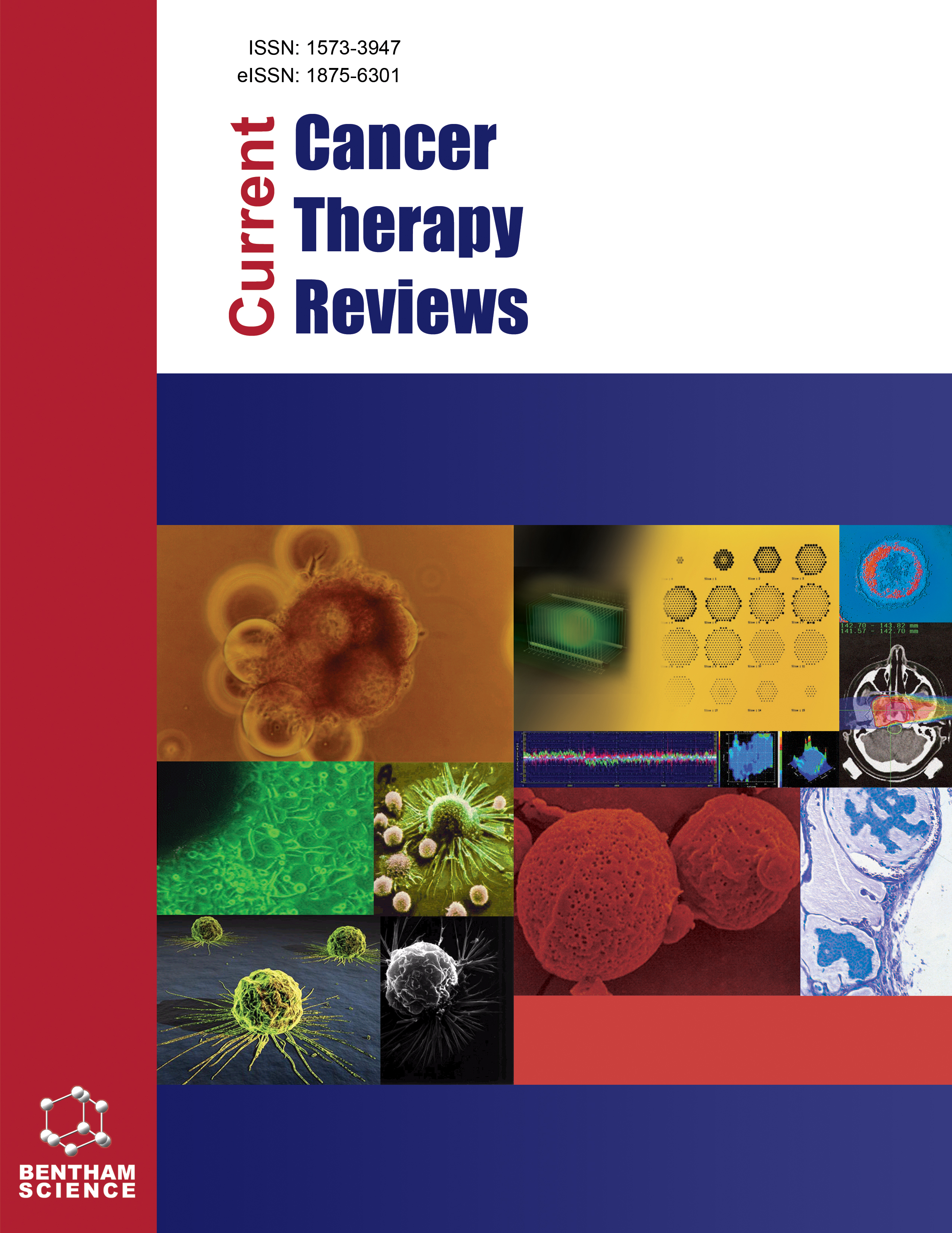- Home
- A-Z Publications
- Current Cancer Therapy Reviews
- Previous Issues
- Volume 2, Issue 4, 2006
Current Cancer Therapy Reviews - Volume 2, Issue 4, 2006
Volume 2, Issue 4, 2006
-
-
Familial Central Nervous System Tumor Syndromes
More LessAuthors: Andreas F. Hottinger, Yasmin Khakoo and Lauren E. AbreyThe vast majority of nervous system neoplasms occur sporadically. However, most adult and pediatric tumors have a hereditary equivalent. These hereditary forms are an invaluable resource in the identification of genes that may be important for sporadic tumor development. In recent years there has been a tremendous increase in the understanding of the genetic basis of many familial cancer syndromes involving the centra Read More
-
-
-
Penetration of Tumor Therapy Interesting Substances in Non-Vascularized Metastases: Review of Studies in Multicellular Spheroids
More LessAuthors: Jorgen Carlsson and Lars GeddaPenetration properties, studied in multicellular spheroids, of totally 23 radiolabeled or boronated substances are summarized. The spheroids were models for small non-vascularized metastases, and there is special emphasis on results obtained with a freeze-drying method. The substances were detected using autoradiography or neutron capture radiography. Certain substances, e.g. 5-FU, glucose, BSH and one antibody, pe Read More
-
-
-
The ABCs of Targeting Raf: Novel Approaches to Cancer Therapy
More LessAuthors: Rebecca Kinkade, Piyali Dasgupta and Srikumar ChellappanThe Ras/Raf signaling pathway mediates key signaling events involved in cell proliferation and angiogenesis and provides several targets for the development of therapeutic inhibitors. Raf kinases are a family of serine/threonine protein kinases that mediate many signaling events in response to growth factor signaling. Inappropriate activation of the MAP kinase pathway happens either through constitutive activation of growth Read More
-
-
-
Adjuvant Therapy in Elderly Patients with Early Breast Cancer
More LessAuthors: Silvia Dellapasqua, Alessandra Balduzzi, Aron Goldhirsch and Marco ColleoniApproximately 50% of new breast cancers occur in women aged 65 and older, and the incidence and prevalence of breast cancer among older women are expected to increase in the future. Moreover, in the past years, life expectancy has increased exceeding 10 years in patients aged 75 years. Aging is associated with a decline in the functional reserve of multiple organ systems, an increase in the prevalence of functional Read More
-
-
-
The Role of FDA in the Regulation of Anti-Cancer Drugs
More LessAuthors: Ramzi N. Dagher and Richard PazdurOncology drug development is an increasingly complex effort involving multiple stakeholders on a global scale. This review summarizes the role of the United States Food and Drug Administration (USFDA) and its office of oncology drugs in the regulation of anticancer drug therapies. The regulatory history of FDA's mission will be summarized. The FDA's role from first-in-human dose finding studies to trials designed to eval Read More
-
-
-
Transcriptional Regulation of Survivin: New Target for Cancer Treatment
More LessBy Muxiang ZhouSurvivin is a unique member of the IAP family. It plays dual roles in inhibiting apoptosis and in regulating mitosis. Moreover, it is highly expressed in almost all types of human cancer but undetected in most normal adult tissues. High levels of survivin expression have been associated with cancer progression, drug resistance, poor prognosis and short patient survival. Therefore, survivin is regarded as a promising target for cancer Read More
-
-
-
Estrogen in Prostate Cancer - Friend or Foe?
More LessBy Eva CoreyProstate cancer is an increasingly prevalent health problem among males, and the need for improved methods of treatment is great. In the 1940s estrogens were shown to be of benefit in prostate cancer, and their use continued for some 30 years, until the advent of LHRH agonists and similar drugs. At the time the mechanism of action of estrogens was thought to involve merely reduction in androgen levels, but new evidence, Read More
-
-
-
Cancer Rehabilitation: Recommendations for Integrating Exercise Programming in the Clinical Practice Setting
More LessAuthors: Margaret L. McNeely, Carolyn J. Peddle, Matthew Parliament and Kerry S. CourneyaPhysical exercise training has been shown to be an effective component of comprehensive rehabilitation for some cancer patients and survivors. The purpose of this paper is to review the potential role of exercise training in the clinical setting and examine methods to deliver these services in the clinical setting. Noting the limited direct research on implementation of clinical exercise programs in the cancer setting, we review t Read More
-
Volumes & issues
-
Volume 21 (2025)
-
Volume 20 (2024)
-
Volume 19 (2023)
-
Volume 18 (2022)
-
Volume 17 (2021)
-
Volume 16 (2020)
-
Volume 15 (2019)
-
Volume 14 (2018)
-
Volume 13 (2017)
-
Volume 12 (2016)
-
Volume 11 (2015)
-
Volume 10 (2014)
-
Volume 9 (2013)
-
Volume 8 (2012)
-
Volume 7 (2011)
-
Volume 6 (2010)
-
Volume 5 (2009)
-
Volume 4 (2008)
-
Volume 3 (2007)
-
Volume 2 (2006)
-
Volume 1 (2005)
Most Read This Month
Article
content/journals/cctr
Journal
10
5
false
en


